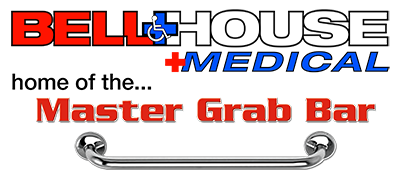Balancing Act: Navigating the Challenges of Aging with Stability and Confidence
Fri, Jan 5th, 2024
As we gracefully age, our bodies undergo a myriad of changes, and one aspect that often takes a hit is our sense of balance. The decline in balance is a common and often overlooked aspect of aging, yet it plays a crucial role in maintaining independence and preventing falls. In this blog post, we will explore why balance tends to deteriorate with age, strategies to maintain balance, and the importance of assistive devices in promoting stability.
Why Does Balance Deteriorate as We Age?
Balancing is a complex interplay of various bodily systems, including the vestibular system, vision, and proprioception. Unfortunately, as we age, these systems may experience a decline in function, leading to a gradual deterioration of balance. Some contributing factors include:
Muscle Weakness and Loss of Mass:
As we age, there is a natural decline in muscle mass and strength, known as sarcopenia. Weakening muscles, especially in the lower body, can compromise our ability to support ourselves and maintain stability.
Changes in Vision:
Age-related changes in vision, such as reduced depth perception and peripheral vision, can affect our ability to navigate our surroundings confidently. Poor vision can increase the risk of missteps and falls.
Decline in the Vestibular System:
The inner ear's vestibular system plays a crucial role in balance by detecting changes in head position. With age, the vestibular system may decline in function, leading to dizziness and an increased risk of falls.
Joint Stiffness and Reduced Flexibility:
Aging often brings about joint stiffness and reduced flexibility, particularly in the ankles, knees, and hips. These limitations can impact our ability to make quick adjustments and maintain balance.
Neurological Changes:
Changes in the nervous system can affect the coordination and speed of our movements. Slower reaction times and diminished coordination may contribute to a higher risk of falls.
Maintaining Balance as You Age
While the natural aging process brings about changes in our bodies, there are proactive steps we can take to maintain and improve our balance as we age:
Regular Exercise:
Engaging in regular physical activity, including strength training, flexibility exercises, and balance-focused activities like yoga or tai chi, can help maintain muscle strength and improve coordination.
Healthy Diet:
Proper nutrition is essential for maintaining muscle mass and bone density. A diet rich in vitamins and minerals, particularly calcium and vitamin D, supports bone health.
Regular Vision Check-ups:
Regular eye exams are crucial for detecting and correcting age-related vision issues. Wearing appropriate eyewear, if needed, ensures clear vision and reduces the risk of accidents.
Stay Hydrated:
Dehydration can lead to dizziness and unsteadiness. Ensure you stay adequately hydrated throughout the day to support overall health and balance.
Home Safety Modifications:
Make modifications to your living space to reduce fall risks, such as removing tripping hazards, installing handrails in key areas, and improving lighting.
The Importance of Assistive Devices for Balance
In addition to lifestyle modifications, assistive devices play a vital role in enhancing stability and preventing falls among seniors. Here are some key devices:
Walking Aids:
Canes, walkers, and rollators provide additional support for those with balance issues. They offer stability and help distribute weight, reducing the risk of falls.
Orthopedic Shoes:
Proper footwear is crucial for stability. Shoes with good arch support, non-slip soles, and a secure fit can significantly improve balance.
Handrails and Grab Bars:
Installing handrails along staircases and in bathrooms can provide added support, especially in areas prone to slips and falls.
Balance Training Devices:
Devices designed for balance training, such as stability balls or balance boards, can help improve coordination and strengthen core muscles.
Technology-Based Solutions:
Advancements in technology have led to the development of wearable devices that can monitor balance and provide real-time feedback, assisting individuals in maintaining stability.
Maintaining balance as we age is a crucial aspect of preserving our independence and preventing falls. While the natural aging process poses challenges, adopting a proactive approach through regular exercise, a healthy diet, and lifestyle modifications can significantly contribute to improved stability. Additionally, assistive devices play a pivotal role in supporting individuals with balance issues, offering a sense of security and confidence. By understanding the factors contributing to balance deterioration and taking proactive measures, we can navigate the aging process with grace and maintain a steady stride toward a fulfilling, independent life.
Contact Bell House Medical for devices to help with balance like rollators, grab bars, scooters, home modifications and more…






